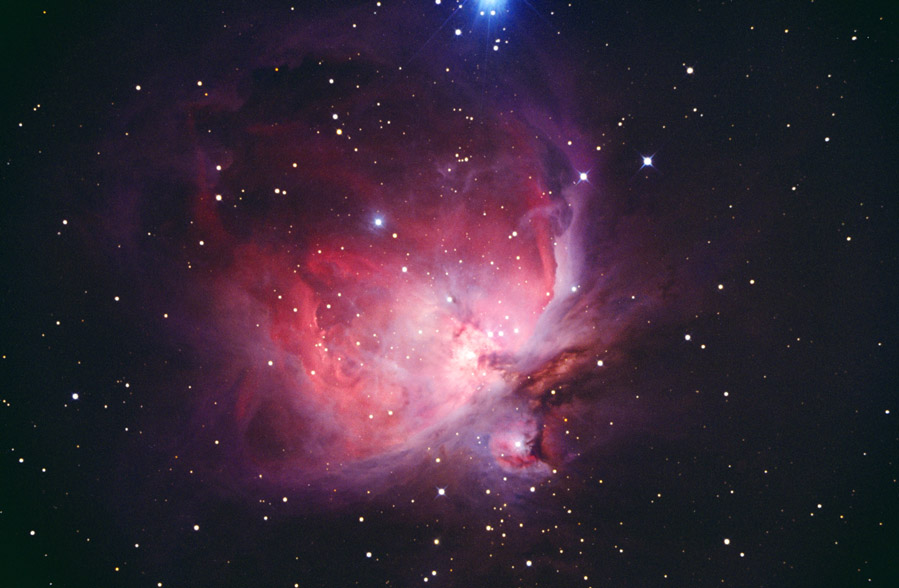
This film based image was made possible by a long series of short to deep exposures that was guided faithfully by the ST-4 Autoguider. The core is normally overexposed to get the faint outer nebulosity in standard images, but here a technique called Luminance Layering was used. This entails a series of exposures in this case ranging from 90 minutes, down to 5 minutes and combined in Photoshop into one final image, with the shortest exposure on the bottom of the stack. The over exposed regions are removed successively from each layer leaving a cut out to see the layer below. This method retains both bright and dim nebulosities in one image. CCD imagery can employ this same technique for especially bright objects.
Instrument: 12.5" f/5 Home made Newtonian Camera: Pentax K1000, Auto guided with ST-4 Exposure: 90, 45, 22, 12, 5 mins combined on hypered Kodak PJ400 (Now LE400) Location: Payson, Arizona Elevation: 5150 ft. Sky: Seeing 8/10, Transparency 8/10 Outside Temperature: 32 F Processing: Photoshop, PW Pro.
Previous Uploads: Three faces of Comet Linear Comet Linear A2 6-27-01 Van Cittert Deconvolution of the Lunar Highlands More Northern Lights and the ISS over Payson The NGC891 Galaxy Group Notes CCD Shots during Full Moon Comet Linear July 19 & 25th, 2000 Latest image of Comet Linear S4 Spectacular Red Aurora over Payson Arizona Fuji's New Formulation of it new Super HQ100 FIRST TESTS OF HYPERED FUJI HQ100 First Schmidt shots with PJ400 First Tricolor shots with 2415 Test Images with Fuji NPH400 First Two Comets with the new CCD Camera